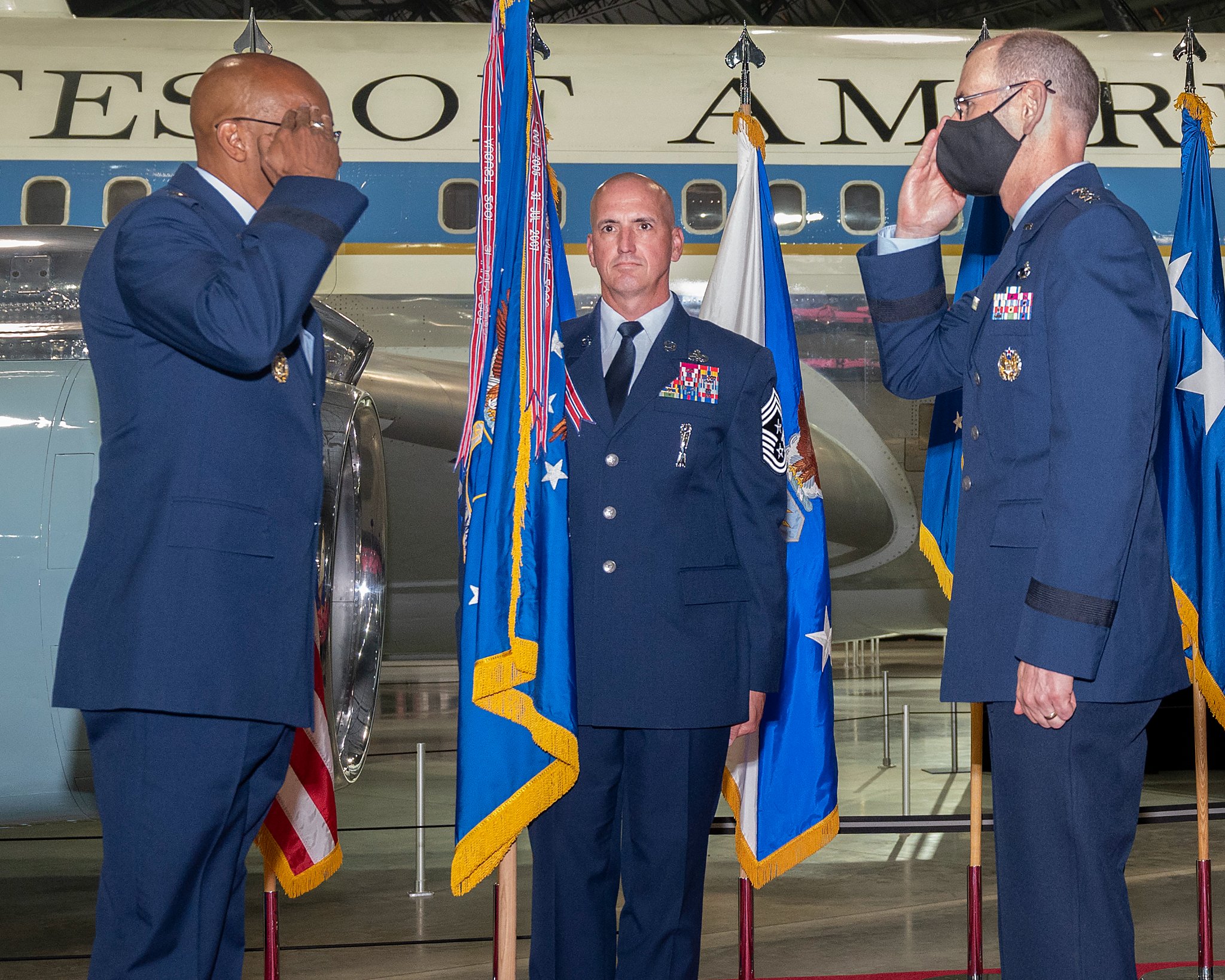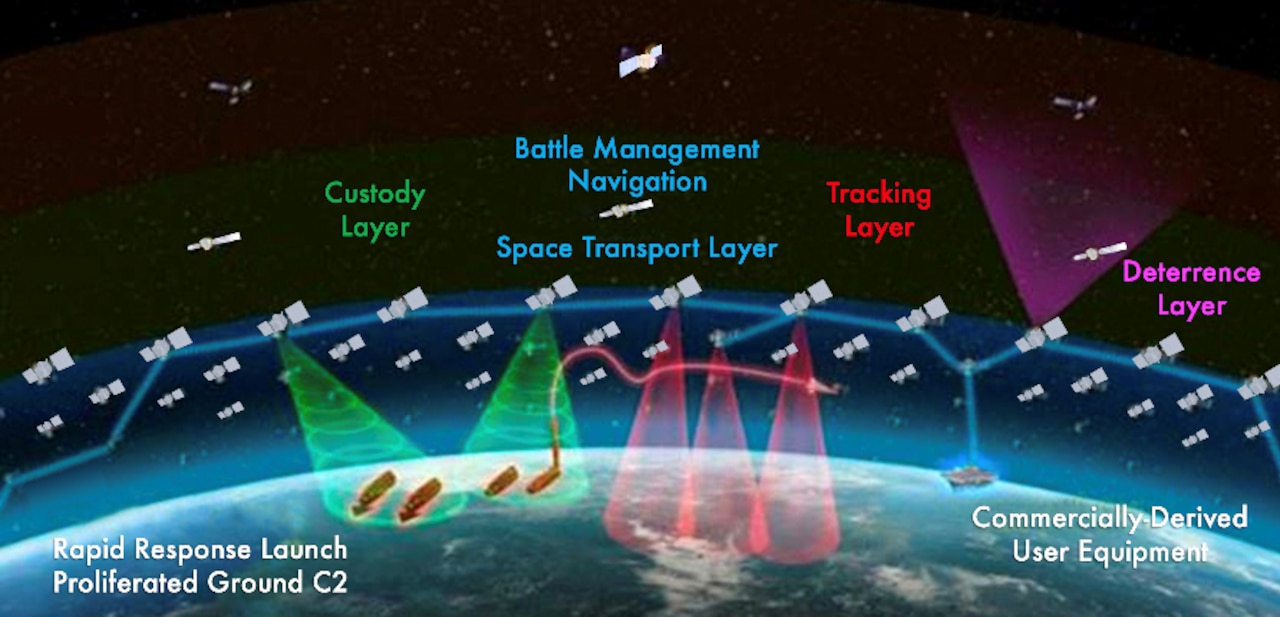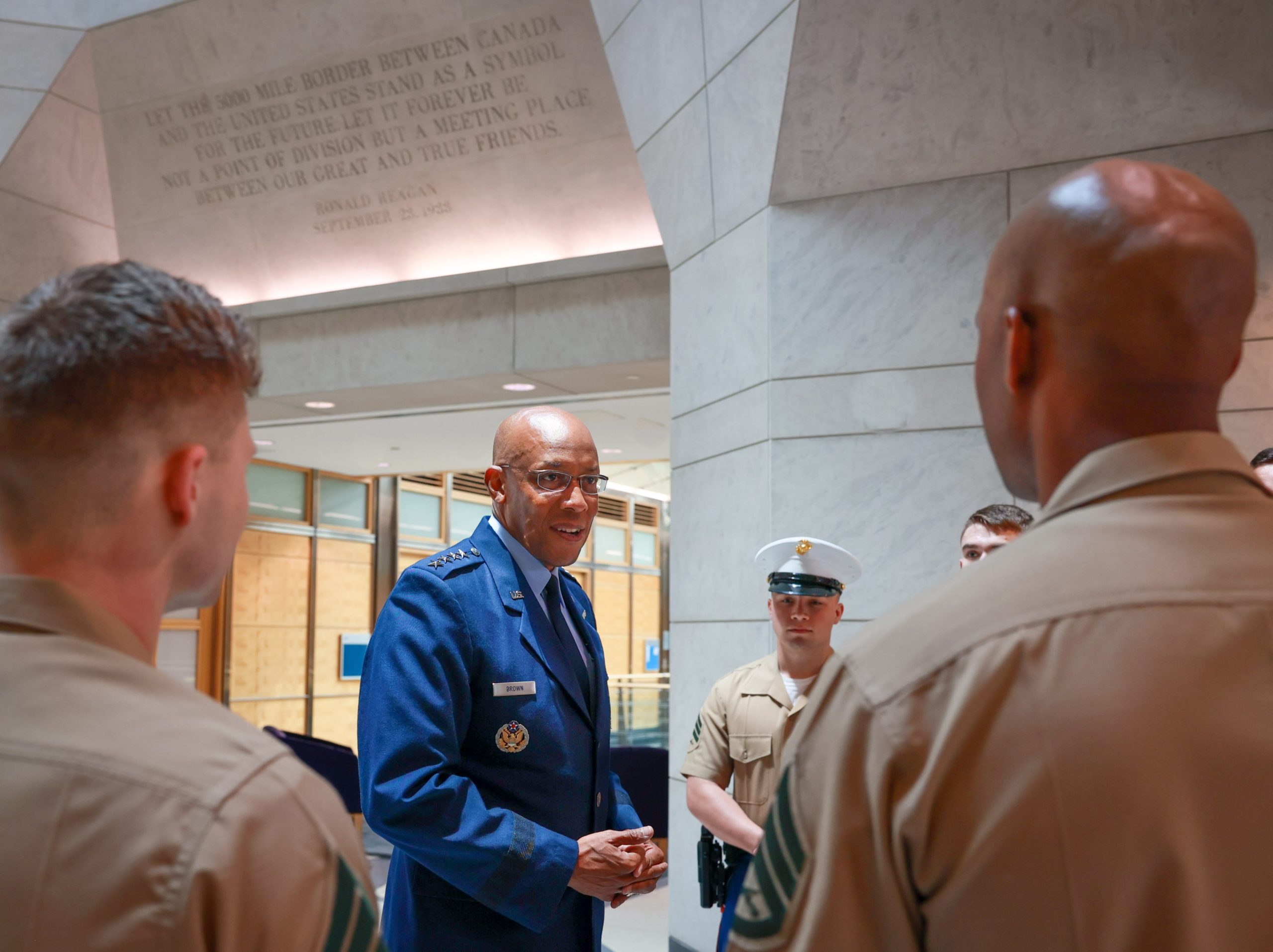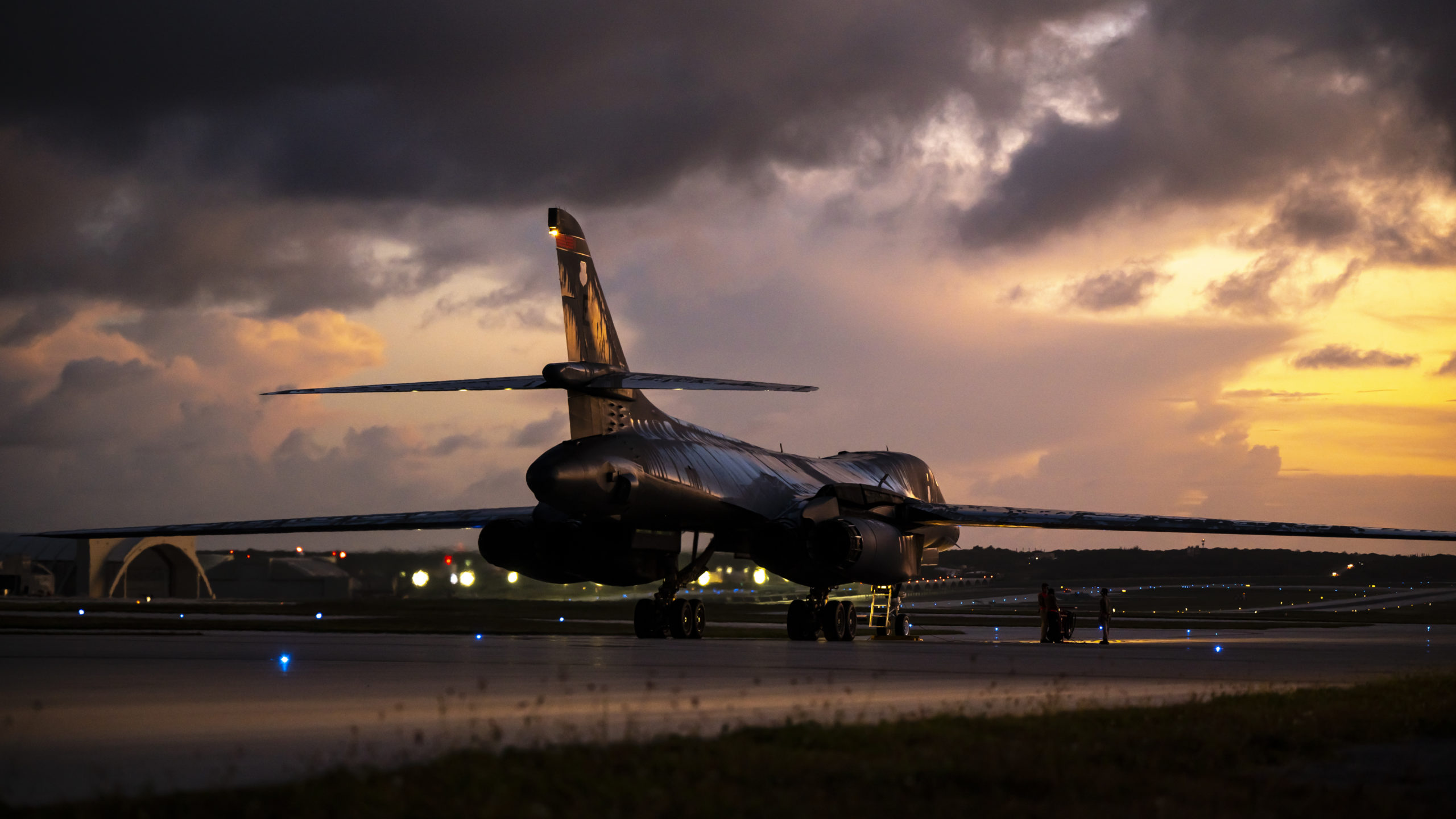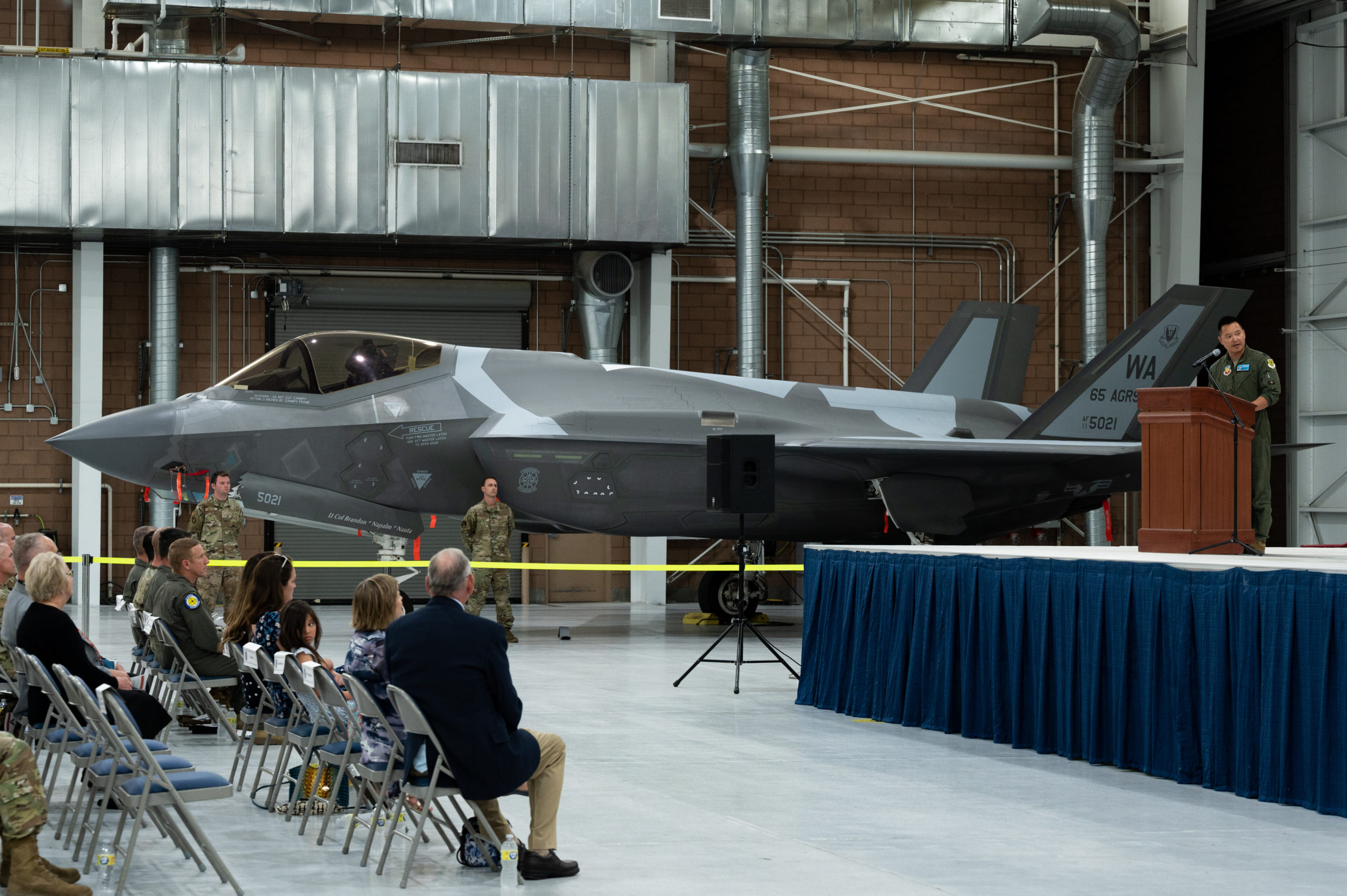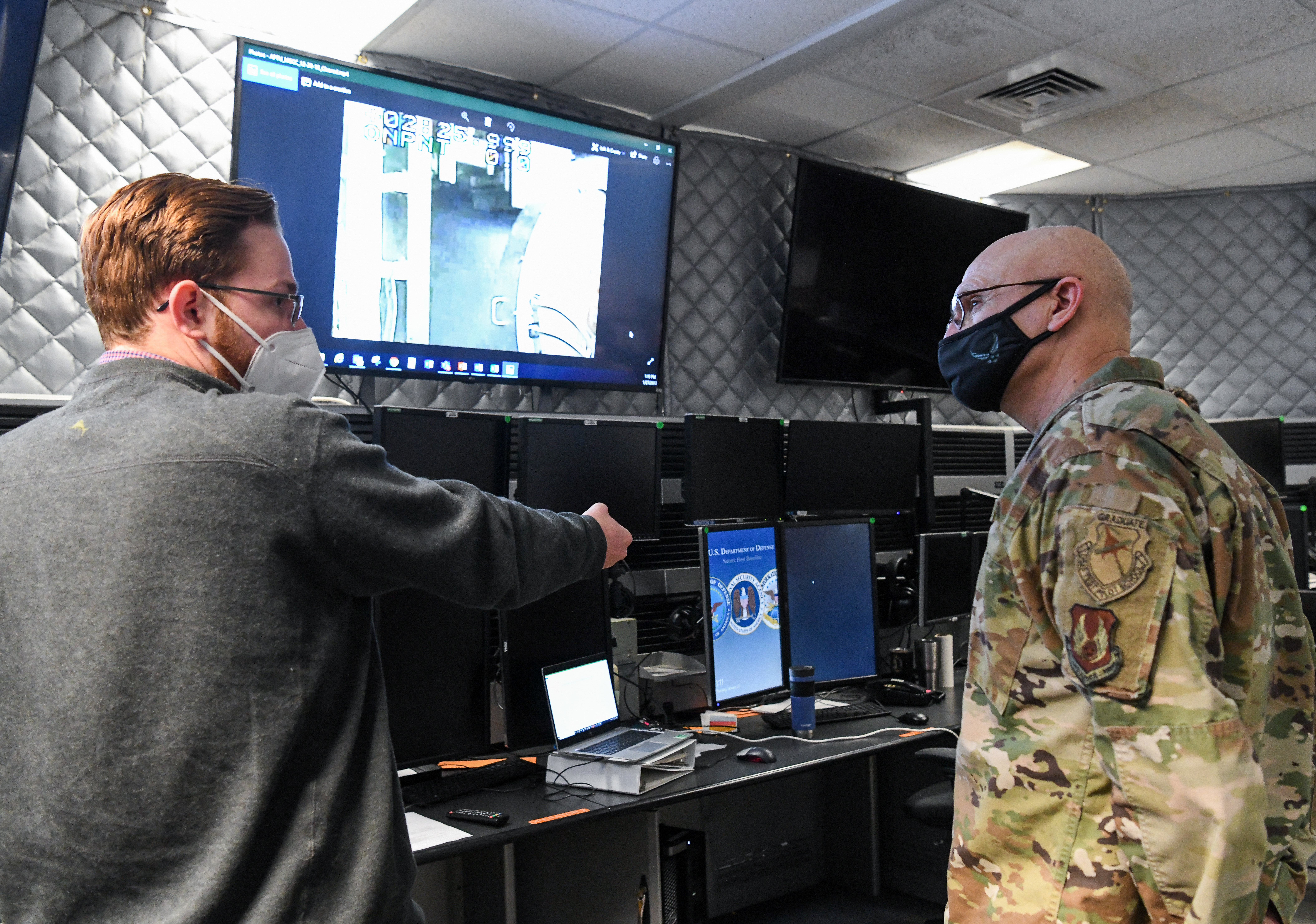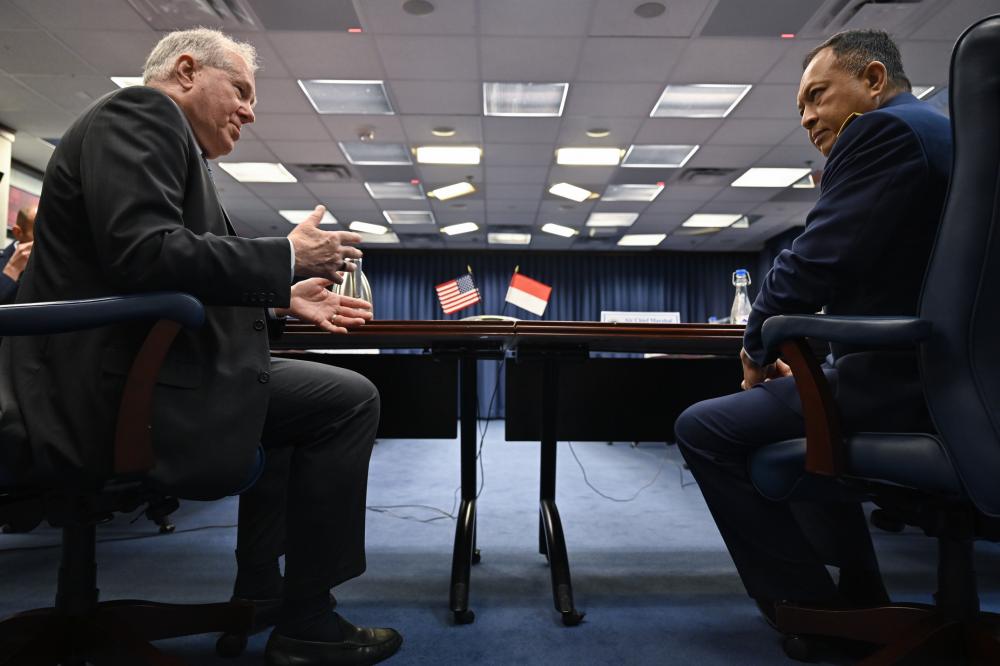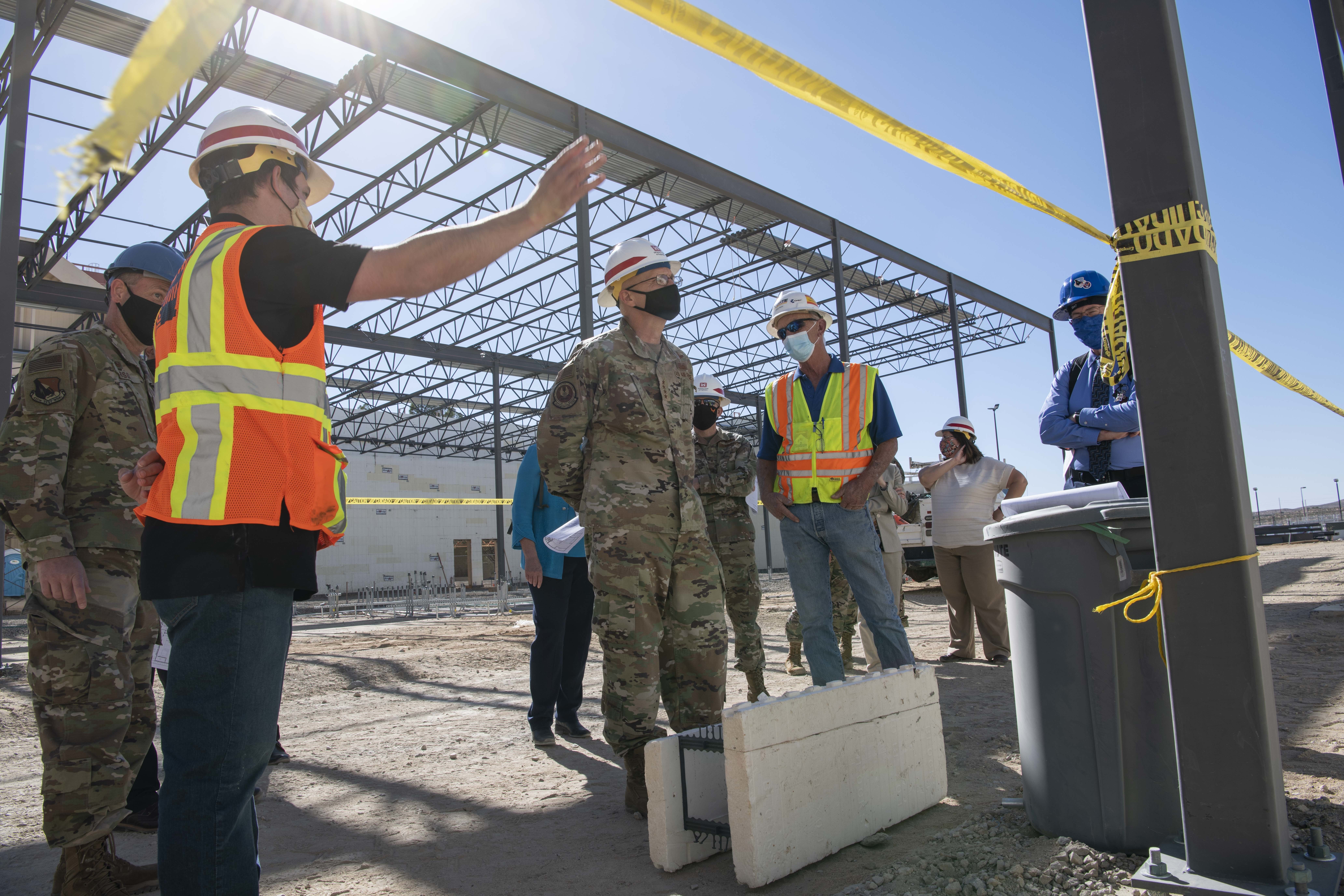Pledging to pursue “speed without sacrificing discipline” in the acquisition process, Gen. Duke Z. Richardson took command of Air Force Materiel Command on June 13, relieving Gen. Arnold W. Bunch Jr., who has run the service’s acquisition, research, development, logistics, and test organization since 2019.
The change of command, which took place at the Museum of the U.S. Air Force at AFMC’s home of Wright-Patterson Air Force Base, Ohio, marked the third time Richardson, previously the top uniformed acquisition official on the Air Staff, has succeeded Bunch in a senior position.
In a ceremony presided over by Chief of Staff Gen. Charles Q. Brown Jr. and attended by Air Force Secretary Frank Kendall, Richardson accepted the guidon from Bunch, saying he recognizes that “the threats to our nation and our way of life are real.” Richardson committed himself to “living and working according to our core values, … keeping the warfighter and the taxpayer at the forefront, … ensuring our work is tightly aligned to the Secretary’s and Chief’s priorities, … [and] to my personal credo, [to] make every day count, in order to fulfill our AFMC mission.”
Addressing the personnel of the command, Richardson pledged, “I will not let you down.”
Brown said there is “no one more qualified” to lead AFMC than Richardson, who enlisted in the service at age 18 and was later commissioned through Officer Training School. Richardson started out as a space avionics engineer and later was a program executive officer for fighters and bombers, was the vice commander of the Air Force Life Cycle Management Center, was the PEO for tankers and airlift aircraft—including the KC-46 program—and the PEO for executive transports, including the Air Force One replacement program. He served as a PEO during five different assignments.
Brown lauded Bunch as a “person of honesty, sincerity, and virtue, and a straight shooter” with a “reputation for excellence,” who served during “one of the most exciting but challenging times for this command.”
Bunch managed the launch of the Next-Generation Air Dominance program, hypersonics, and development of the B-21 bomber, Brown said, along with advances in sustainment, accelerating modernization, and keeping USAF “ahead of our competition.”
In a citation for the Distinguished Service Medal, Bunch was also praised for keeping AFMC running seamlessly during the COVID-19 pandemic and leading “the $5 billion effort” to rebuild Tyndall Air Force Base, Fla., after its destruction by Hurricane Michael in 2018. He was also recognized for “driving digital innovation,” which led to the success of design efforts in the Sentinel ICBM system; for pushing efficiencies at USAF’s depot systems and saving over $500 million by reducing depot days; and for introducing directed energy programs and “realigning Air Force Research Laboratory’s $5 billion portfolio” of research efforts.
At AFMC, Brown said, Bunch “created a thriving culture of innovation and collaboration” and was a “huge advocate for our civilian Air Force workforce.” Bunch pursued initiatives in diversity, equity, and accessibility, Brown said, including a new equal opportunity employment model.
In his remarks, Bunch noted that the new National Defense Strategy and Kendall’s “operational imperatives” demand that AFMC be successful. He thanked AFMC personnel for their accomplishments on his watch to create “negative-pressure CONEX” containers to transport those with infectious diseases; the first flight of the F-15EX; bringing AFMC up to speed with telework; “our digital campaign”; defense procurement act work; nuclear modernization; remote distributed test operations; “S&T 2030 implementation”; keeping basic training going during COVID-19 by “setting up a tent city in a week”; female body armor; F-35 power module repairs; and “stepping into a non-doctrinal role” managing acquisition for the fledgling Space Force.
Bunch “led our Air Force into a digital transformation,” Brown added, which is the new standard for acquisition.
Bunch’s 38-year career started at the Air Force Academy. He went on to become a B-52 pilot and then a test pilot, qualifying in the B-2 and KC-135 as well; and later testing and managing elements of the F-35, Global Hawk, Airborne Laser, B-2, and F-22 munitions programs. He was the first commander of the Air Force Test Center, PEO for fighters and bombers, commander of the Air Force Security Assistance Center, and military deputy to the Air Force’s service acquisition executive.
Bunch has accepted the position of superintendent of Schools for New Hamblen County, Tenn.
